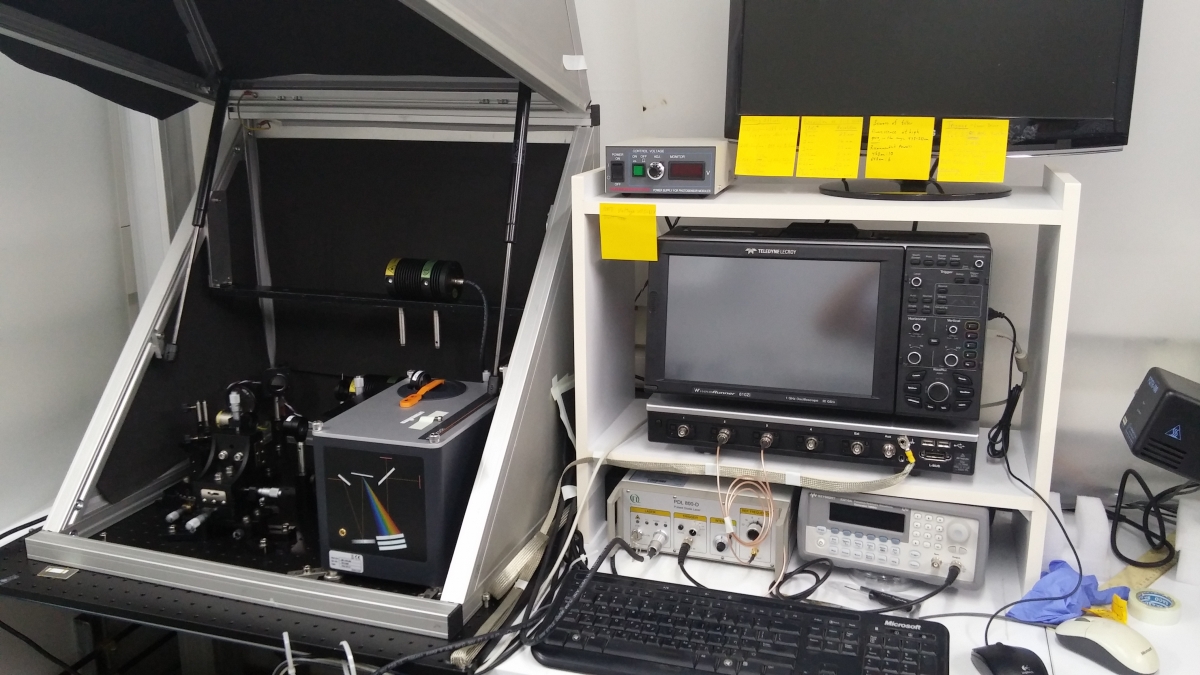Time Resolved Photoluminescence
This system can measure the photoluminescence intensity emitted from a sample as a function of time (at the nanosecond scale) and wavelength. This system can be used, for instance, to characterize fluorescence lifetime in fluorescent samples and photoluminescence lifetime in direct-bandgap semiconductors. The system consists of a 450nm pulsed laser excitation source with pulse width <500 ps, a monochromator, and a photomultiplier tube for detection of the luminescence. The time resolution of the system is as fast as 1 ns and the spectral range is 470 nm to 900 nm.

Ellipsometry
An ellipsometer enables to measure the refractive index and the thickness of semi-transparent thin films. The instrument relies on the fact that the reflection at a dielectric interface depends on the polarization of the light while the transmission of light through a transparent layer changes the phase of the incoming wave depending on the refractive index of the material. An ellipsometer can be used to measure layers as thin as 1 nm up to layers which are several microns thick. In our research it is mostly used in order to measure the thickness of the oxide layer or the organic (mono)layer on different substrates as Si, GaAs, InP, Al, Au, as well as biological samples.

Polarization modulation-infrared reflection-absorption spectroscopy (PM-IRRAS)
We use fourier transform infrared (FTIR) spectroscopy (BRUKER, EQUINOX-55) in both the transmission mode and the ATR mode, using the liquid nitrogen cooled mercury cadmium telluride (MCT) detector. This technique serves us as an additional tool to evaluate the quality of monolayers.

Grazing-Angle Attenuated Total Reflectance (GATR)

UV-visible spectroscopy

Circular Dichroism
Internal Photoemission (IPE)
Photovoltaic Measurement
Kelvin Probe, Surface Photovoltage (SPV), Contact Potential Difference (CPD)


